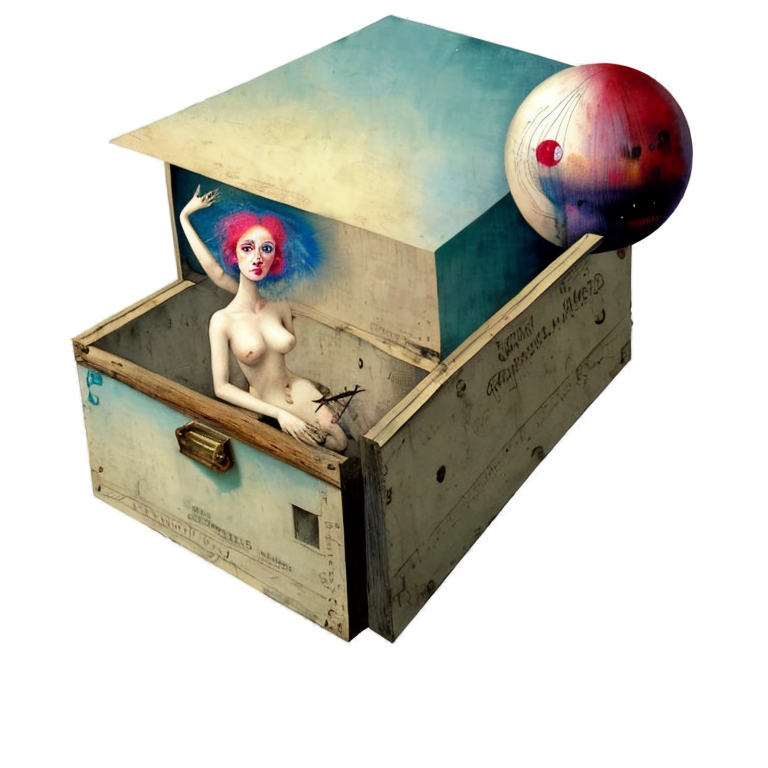Art therapy isn’t just limited to formal sessions with a trained therapist. You can also engage in art therapy on your own, using creativity as a tool for self-discovery and emotional healing. Working independently allows you to explore your emotions and thoughts at your own pace and in a safe, personal environment.
Why Practice Art Therapy Alone?
Engaging in art therapy on your own can offer numerous benefits, including:
- Personal Expression: It provides a private space to express emotions that might be difficult to share with others.
- Flexibility: You can work on your art at any time. You can fit it into your schedule. You can adapt it to your needs.
- Self-Paced Exploration: You can take as much time as you need to explore and reflect on your emotions and experiences.
- Cost-Effective: Independent art therapy eliminates the need for sessions with a professional, making it an accessible option for many.
🎨✨ Free Art Therapy Bot Now Available! ✨🎨
We’re excited to announce the launch of our FREE Art Therapy Bot! 🎉
You can explore your emotions. You can heal through creativity. Relax with personalized art. Our AI-powered bot is here to help.
🌟 What can you do?
- Generate custom artwork based on your mood
- Dive into a therapeutic experience through AI-guided creativity
- Explore emotional healing and self-expression with ease
Getting Started with Self-Directed Art Therapy
It’s simple, powerful, and FREE! Start your creative journey today and discover how art can transform your well-being.
Here are some steps and tips to help you start art therapy on your own:
- Create a Comfortable Space:
- Set up a dedicated area where you can work on your art without interruptions. This space should be relaxing and inviting, filled with materials that inspire you.
- Gather Your Materials:
- Choose art supplies that you enjoy working with. This could include pencils, paints, markers, clay, or collage materials. The goal is to use whatever feels most natural and enjoyable for you.
- Set an Intention:
- Before you begin, take a moment to think about what you want to explore or achieve. This could be a specific emotion, a recent experience, or a general sense of well-being.
- Start Creating:
- Allow yourself to create freely without judgment. There are no right or wrong ways to make art. Focus on the process rather than the outcome. Let your emotions guide your creative choices.
- Reflect on Your Work:
- After creating, take some time to look at what you’ve made. Ask yourself questions about the process and the final piece. What emotions or thoughts came up while you were working? How do you feel about the finished artwork?
- Journaling:
- Consider keeping a journal alongside your art practice. Write about your creative process, your feelings, and any insights you gain. This can help deepen your understanding and reflection.
- Set Regular Time:
- Incorporate art therapy into your routine. Whether it’s daily, weekly, or whenever you feel the need, regular practice can enhance its therapeutic benefits.
- Experiment and Explore:
- Don’t be afraid to try different techniques or materials. Experimentation can lead to new discoveries and insights. Let your curiosity and creativity guide you.
- Practice Mindfulness:
- Use your art practice as a form of mindfulness. Focus on the present moment and the sensations of creating. This can help reduce stress and increase self-awareness.
- Seek Support if Needed:
- If self-directed art therapy is triggering, seek guidance from a professional art therapist. They can provide support when it’s too challenging.
Examples of Art Therapy Activities to Try
- Emotional Self-Portrait: Create a portrait that represents how you feel emotionally. Use colors, shapes, and symbols to express your current state.
- Collage of Dreams: Make a collage using images and words from magazines that represent your dreams, hopes, or aspirations.
- Mood Map: Use different colors and shapes to create a visual map of your mood over a specific period. This can help you track changes and identify patterns.
- Creative Journaling: Combine writing and drawing in a journal. Sketch or doodle alongside your written reflections to explore your thoughts more deeply.
- Symbolic Art: Create artwork that represents a specific symbol or metaphor related to your current emotional state or personal journey.
Conclusion
Art therapy on your own can be a powerful and enriching way to explore and heal your emotions. By integrating creativity into your self-care routine, you can gain valuable insights, reduce stress, and foster personal growth. Remember, the most important aspect of self-directed art therapy is to be kind to yourself. Embrace the process of creation as a journey of self-discovery.
Please share on your preferred social media platform!
Share on your favorite social media!!
Now Available: Digital Downloads! On Sale Now!
Brain On Love: Explore the new collection! Now available at It’s Time For A Melody

Each piece in this collection represents a unique facet of trauma’s impact on our psyche, blending bold colors and dynamic forms to capture the essence of this profound experience.


